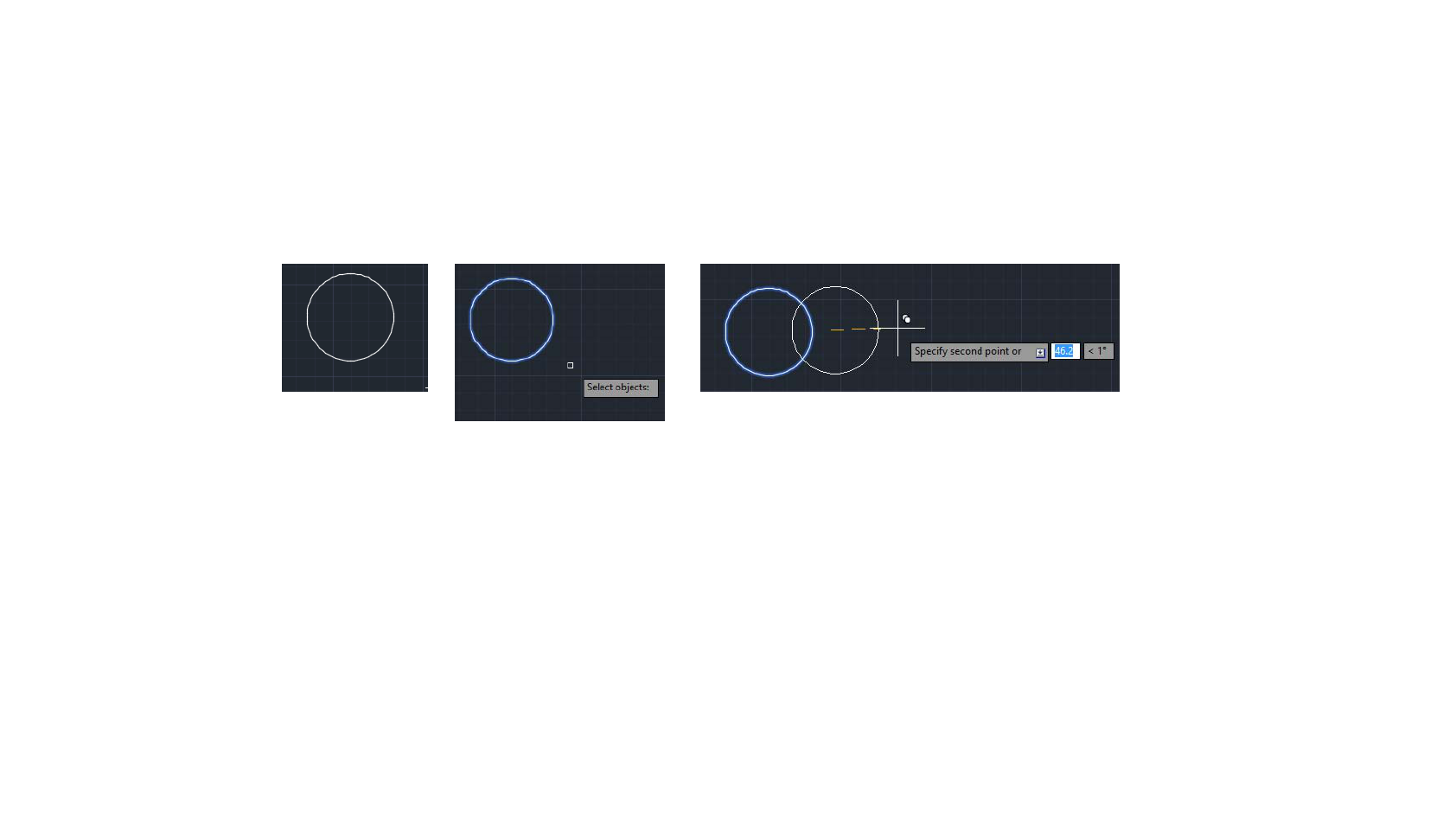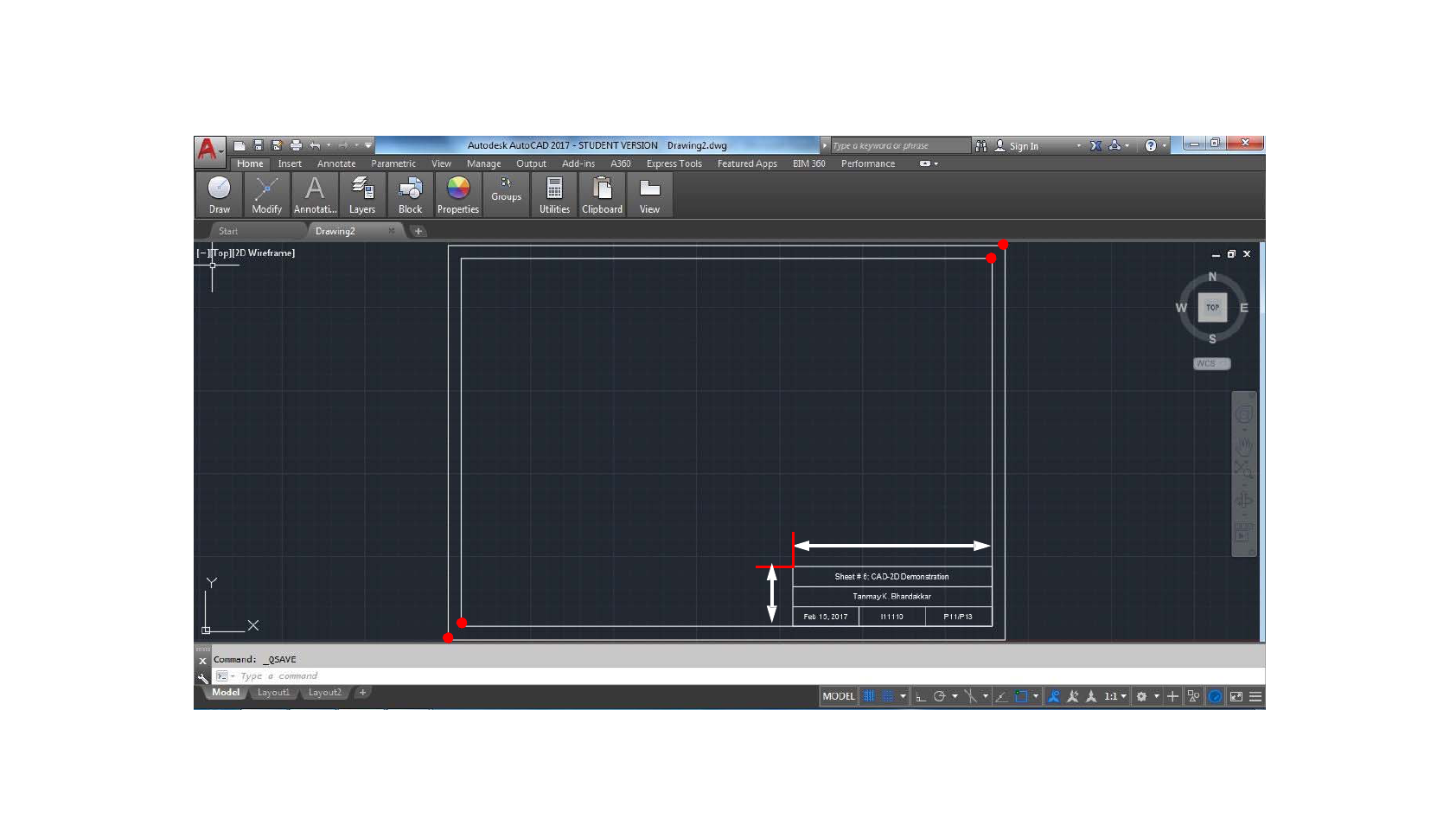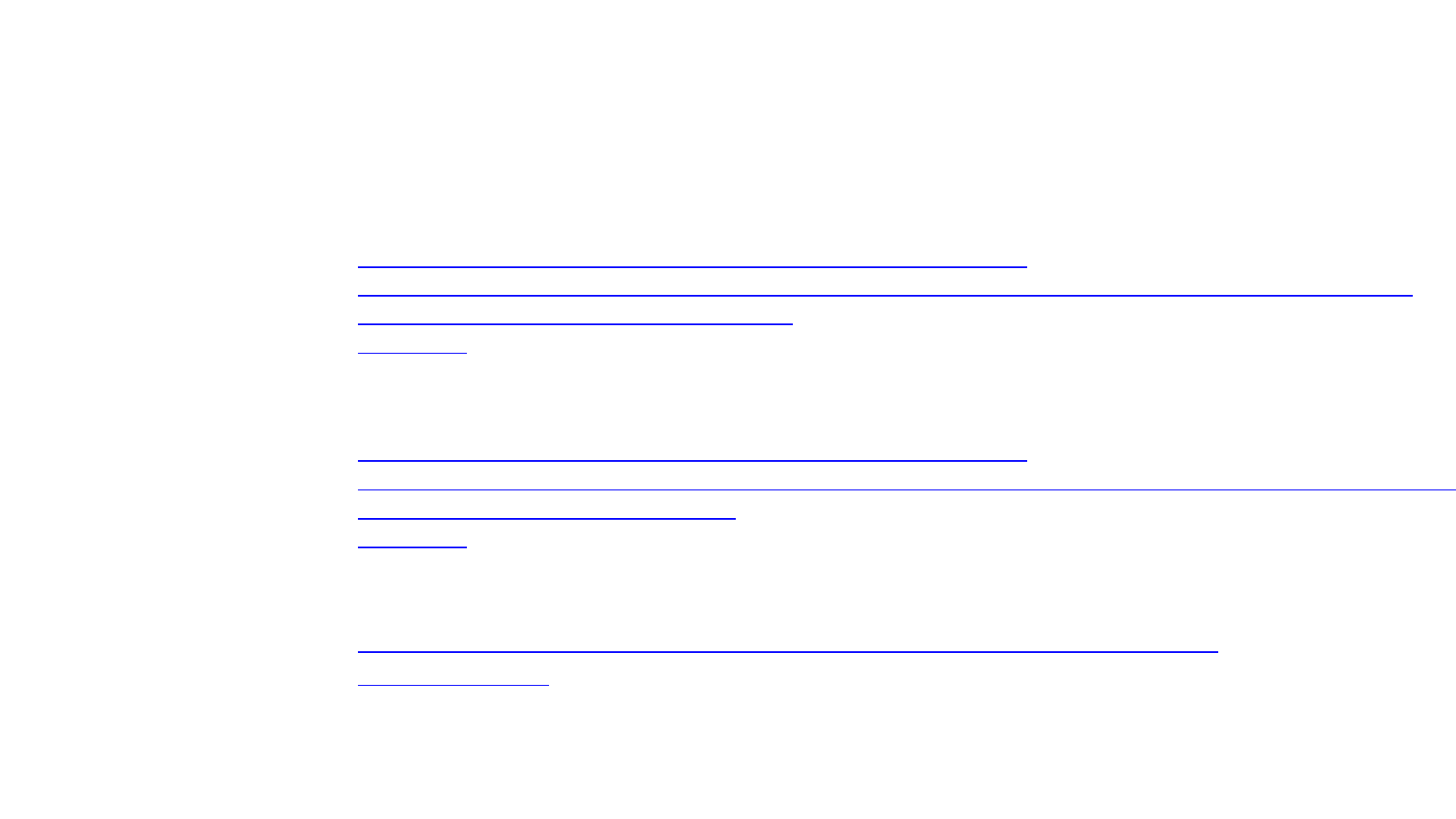
1
Introduction toAutoCAD
Video Lecture for ME119
Instructor: Amitabh Bhattacharya
Department of Mechanical Engineering,
I.I.T. Bombay
http://www.autodesk.com/education/free-software/autocad
Acknowledgement: Prof. Tanmay Bhandakkar, Prof. Salil K ulkarni

ComputerAided Drawing (CAD)
❑ Computer aided drafting (CAD) is a process of constructing drawing
computer screen with the help of specially developed software
❑ Advantages: Accurate, time saving, standardization, easily
shared, easy to edit
❑ Widely used commercial softwares:
• AutoCAD
• Pro/Engineer
• Catia
• SolidWorks
• NX Unigraphics
2

3
Snapshot of theAutoCAD screen
Ribbon panel
Command line
Status bar
Graphic cursor
Drawing space
Co-ordinate system (UCS)
Ribbon tab

Setting Units
• In this course, the units for drawing objects will
usually be in mm
– If nothing is mentioned then units are in mm
• AutoCAD does not use mm by default
– This may cause issues while printing/saving as pdf
– Becomes difficult to define other properties like line
thickness, etc
• We will first ensure that the units are in mm
– Also a good idea to set the precision to single decimal
place
4

Setting Units
A
B

Page Setup : Model
Printer name: D W G to PDF
Paper size: ISO full bleed A3 (420x297 mm)
Scale: 1:1
• Choose “dwg to pdf” for printer name
• Choose “ISO Full BleedA3 (420x297 mm)”
under paper size
• We won’t really worry about the page setup
for “Layout” tabs

Object Snap (OSNAPCommand)
• While hovering cursor, AutoCAD will
automatically select intersections, midpoints
etc.
• OSNAP command can be used to set which
points should be chosen

v
Utilities ‐>PointStyle
Make Nodes/Points Visible
• Sometimes we mark intersections/divisions
using nodes/points
• We have to make these intersections visible
using markers

Annotation –> Text Style ‐> Manage text styles
Annotation – Select Annotative
for text, dimensions and multi‐
leader style
Select annotativ e
Setting Up Text Style
• Text size should not be too large/small
compared to figures
– Always test your settings

Annotation –>
Dimension Style ‐>
Manage text styles
OR
Command: DIMSTY
Dimensioning Style
Make sure that size of te xt and arrows are not too large/small
Again – test your settings

Layer manager
Add new layer
To activate a layer in the
drawing
To change the line type of a layer, click on the current line
type, then load, then select appropriate line type to load.
Now select the loaded line type.
New layers created using the layer manager
Using the layer manager you can add/delete layers, change
linetypes, colour and freeze and thaw layers
LAYER Command
You may use differen t colors for layers. Set all layers to white color
before exporting to pdf.
NEVERuse the ͞de fpoints͟ layer

12
Summary of Settings
• Units (to mm)
• Page setup (420x297 mm)
• Object snap settings (OSNAP)
• Make nodes visible
• Set text size
• Set dimensioning style
• Set Layer properties

COPY/MOVE
• Make a circle (CIRCLE command)
• Enter COPY command->select object (left-click)-
>right click (select base point)->drag object-
>right click (repeat if needed)
• Press Esc once you are finished copying
• MOVE command is very similar
13

(1,1)
(3,1)
(4,2)
(4,3)
(1,3)
5
PLINE: Different ways of creating polygons
Relative Cartesian coordinates
Command: PLINE
1
st
point: 1,1
2
nd
point: 2,0
3
rd
point: 1,1
4
th
point: 0,1
5
th
poin t: ‐2,0
6
th
poin t: c
1
2
3
4
Relative Polar coordinates
Command: PLINE
1
st
point: 1,1
2
nd
poin t: 2<0
3
rd
point: 1.414<45
4
th
point: 1<90
5
th
point: 3<180
6
th
poin t: c
Other important shapes: CIRCLE, SPLINE

ORTHO Mode
• ORTHO mode ON helps us draw lines that are
exactly parallel to axes
• Turn ORTHO OFF if line needs to be drawn at
an angle
15

❑ Paper, margins and name plate:
• Size of sheet is A3 (Width = 420 mm, Height = 297 mm)
• 10 mm margin on all sides
• Name plate (Size: 150 mm x 45 mm) should appear in the right bottom
corner as follows
Template to be used for all theAutoCAD sheets

1
7
Steps to generate the template
(1) Use "rectangle" command with corner co-ordinates (0,0) and (420,297) to generate
"A3" size drawing area.
(2) Use "rectangle" command with corner co-ordinates (10,10) and (410,287) to
generate border with a gap of 10 mm. Other option is "offset" command or relative
co-ordinates @.
(3) For name-plate, again "rectangle" command can be used with appropriate co-
ordinates.
(4) Other option is move the "ucs" to the right bottom corner of the inner rectangle.
Use "rectangle" command with corner co-ordinates (0,0) and (-150,45). Move the
"ucs" back to the left corner of the outer rectangle.
(5) For Name plate, the innermost smaller rectangle in the right corner is to be divided
into three equal parts. Switch on the ORTHO mode (F8). See the right corner of the
computer screen.
(6) Draw line to coincide with the horizontal edge of the smallest rectangle.
(7) "Move" the line along –y direction by 15 units w.r.t original location.
(8) "Copy" this line and move the new line relative to the 2
nd
line further by 15 units in
the –y direction.
(9) In the bottommost rectangle of the name plate, use “Move" and "Copy"tofurther
divide the rectangle into three move parts. Keep both the ORTHOMODE and
S
N
A
P
O
N
m
o
d
e
ac
t
iv
e
.

18
Steps to generate the template
10) Add text using "text" command. The text should appear at the centre of the
rectangular boxes of the rectangles of the name plate. It’s a good idea to turn off
“Object Snap” (OSNAP), since the text placement can get constrained.
11) With TEXT command, you can always enter multiple text lines. Press CTRL-
ENTER to stop entering the text.

Snapshot of the template to be used for all theAutoCAD sheets
(0,0)
(420,297)
(410,287)
(10,10)
150
45
19

Example: Drawing a Hexagon
• Draw a hexagon with side 50 mm
Commands used: CIRCLE, LAYER, TRIM, TEXT, DIMALI
20

Example: Drawing a Spline
• Draw a polyline, connect the vertices with a
curve
21
Commands used: PLINE, POINT, LAYER, DIMALI, DIMANG

Example: Divide a Line
• Divide a line into 5 equal parts
Commands used: PLINE, DIVIDE, POINT, DIMALI,
• Use MEASURE command to verify distance
between divisions
22

Example: Final Sheet
• Use export‐>pdf to
print
• Always check print‐
>plot preview
23

Dimensioning for Scaled Objects
• Say actual square has dimensions 500mm, but I
want to show it with a square of 100 mm
– Scale is 1:5
• Use DIMLFAC statement
– Set DIMLFAC=5
24

25
LTSCALE: Adjusting Dashed/Dash-
Dot Lines
• Dashed/Dash-dot lines will have default
spacing between the dashes and dots
• LTSCALE can be used to set this spacing
• Usually LTSCALE value of between 0.1 and 1
is used

26
EXTEND: Extending Lines
• Construction lines may sometimes need to be
extended
• Areference line needs to be chosen, which
intersects the trace of the original line
• The original line is then extended by the
EXTEND statement
– Reference line can then be deleted

27
TRIM: Trimming Construction
Lines and Arcs
• Circles and long lines are sometimes used for
construction, and need trimming
• Areference curve (e.g. circle, line..) needs to
be chosen which intersects the construction
line/circle
• TRIM statement can then be used to trim the
construction line

Sectioning In AutoCAD
AutoCAD does not have a section line. We will
have to make our own section lines
Use QLEAD command for arrow
Set arrow size in properties
a,1
c,3
Two d ifferent layers are required for the dash-dot lines
Use HATCH command to hatch the section
ANSI 31 can be used, along with appropriate scaling
x
y
b,2
d,4
a'
c'
1'
4' 3'
28

29
Isometric Drawing
• 1. To draw isometric views, use the ISODRAFT command
– https://knowledge.autodesk.com/support/autocad/learn-
explore/caas/CloudHelp/cloudhelp/2018/ENU/AutoCAD- Core/files/GUID-37463F74-
0B06-46E2-8791-6C5B852A069D-
htm.html
• 2. To draw isometric view of circle, use ELLIPSE command after using ISODRAFT
command
– https://knowledge.autodesk.com/support/autocad/learn-
explore/caas/CloudHelp/cloudhelp/2018/ENU/AutoCAD- Core/files/GUID-B46904E8-F4
E
43D8-AA74-E06B0D9E83FB-
htm.html
• 3. To dimension isometric drawings in AutoCAD, use the aligned dimensions, along w
i
the DIMEDIT and DIMTEDIT commands
– https://www.thesourcecad.com/how-to-make-isometric-dimension-and-
text-in-autocad/

30
ARC
AREA
ARRAY
BLOCK
CIRCLE
COPY
CYLINDER
DIM
DIMALINGNED
DIMANGULAR
DIMCENTER
DIMDIAMETER
DIMLFAC
DIMSTYLE
DIVIDE
ELLIPSE
ERASE
List of importantAutoCAD commands
(Details at knowledge.autodesk.com)
EXTEND
LAYER
LINE
MOVE
OFFSET
PLINE
POLYGON
QLEAD
RECTANG
REDRAW
ROTATE
SAVE
SCALE
TRIM
U
UCS
ZOOM
